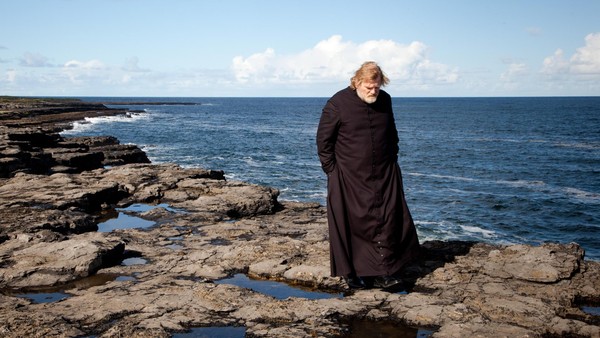 John Michael McDonagh’s first film, THE GUARD, was a mordant spin on the mismatched buddy cop genre, pairing Don Cheadle’s straight-laced American federal agent with Brendan Gleeson’s shambolic Irish cop who’s a lot smarter than he appears. To follow up, McDonagh reunites with Gleeson for a film which retains the dark humour of their earlier collaboration but adds more depth, humanism and perspective on human nature.
John Michael McDonagh’s first film, THE GUARD, was a mordant spin on the mismatched buddy cop genre, pairing Don Cheadle’s straight-laced American federal agent with Brendan Gleeson’s shambolic Irish cop who’s a lot smarter than he appears. To follow up, McDonagh reunites with Gleeson for a film which retains the dark humour of their earlier collaboration but adds more depth, humanism and perspective on human nature.
Much like his brother Martin’s screen debut IN BRUGES, which also featured Gleeson, McDonagh’s latest is filled with philosophical musings juxtaposed with scabrous black humour and bloody violence. But there’s also a state-of-the-nation subtext within the screenplay, revealing a 21st Century Ireland unmoored from old certainties. The revelations of abuse within the Catholic Church have destroyed faith in traditional institutions, and the country’s hyper-capitalist boom has turned to catastrophic bust.
Playing veteran priest Father James Lavelle, Gleeson anchors the whole film in one of his greatest performances; he’s on screen for almost all of the run time. The opening scene is composed entirely of his grizzled face filling the screen, viewed full-on as he hunches in the confessional booth. The anonymous voice in the opposite booth tells of his abuse by a long-dead priest, then announces that he’ll murder James in a week as an assault on the church. “There’s no point in killing a bad priest,” he explains. “But killing a good one? That’d be a shock.”
The title gives away McDonagh’s ambitions to make this a large-scale morality play; like Christ, James is a good man dealing with the knowledge that he will be killed precisely because he is good. The film follows him through the subsequent week as he tends to his parishioners, an unappreciative, oddball collection of characters played by a fine selection of Irish actors.
James’ recalcitrant flock includes Chris O’Dowd as the slightly dim local butcher, Dylan Moran as an arrogant banker who’s remade himself as a modern-day lord of the manor, and Aiden Gillen as a caustically cynical doctor who enjoys needling James with his aggressive atheism. There is more to these characters than adding a sleazy underbelly to this sleepy parish; they represent a challenge to James’ faith and sense of duty.
Each is causally venal and cruel in their own way, and the film suggests it is this small-time sinning that’s the greater danger than flamboyantly outsized evil (such as the serial killer James visits in prison in an attempt to offer counsel). Giving in to little temptations every day – greed, casual adultery, spousal abuse – is something that the priest seems powerless to prevent.
Like Christ, James is a good man dealing with the knowledge that he will be killed precisely because he is good.
James also has a daughter (Kelly Reilly) who visits him for a few days during his final week. While his past as a married man before he joined the church is alluded to, McDonagh doesn’t lean on this backstory for unearned sentiment. It is enough to reveal that he has known pain in his past, and turned to faith to alleviate it and to help others.
As befits a film dealing with a man pausing on a threshold, CALVARY is set in County Sligo on the west coast of Ireland, where Europe meets the Atlantic. The sea is almost a character of its own within the film, right up to the climax set on a beautiful but desolate beach. The camera frequently swoops over this wild, elemental landscape, with its bright green vegetation and hills blasted to rocky outcroppings by wind and water.
On a human scale, cinematographer Larry Smith uses off-centre compositions that show James or other characters at one end of the frame juxtaposed with empty space, closed off from connection. This is particularly effective in the scenes set in the priests’ residence, with the stark white walls contrasting against Gleeson’s hulking figure clad in full-length black surplice.
In the end, the film is concerned with what we pass on, whether through the family we have or the examples we leave behind. While James’ advice is mostly ignored, there are hints that he’s having more of an effect than he thinks.
Late in the film, he reflects on how the Church pays more attention to sins than it does virtues. “I think forgiveness has been highly underrated,” he muses. The final scene, featuring a direct, unbroken shot of one character’s face, is this statement come to life, as the film rises beyond the ugliness of one small town and its secrets to illustrate that goodness can also be passed on to the next generation.
httpvh://youtu.be/8UlI6wJzOpc


Thanks a million 🙂